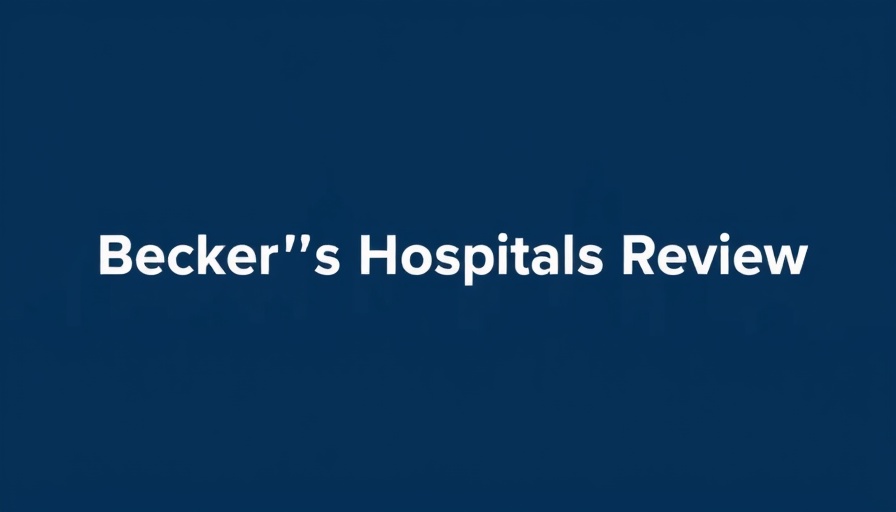
What the CHRO Turnover Surge Means for Healthcare Providers
In a landscape where healthcare practices strive for stability amidst uncertainty, the recent surge in chief human resources officers (CHROs) turnover—up 15% worldwide in early 2025—holds significant implications. A report from Russell Reynolds Associates reveals that CHRO departures hit a staggering 54, with changes impacting over half of the S&P 500 companies.
This shift means healthcare entities need to focus on retention and robust internal talent development. As an independent healthcare provider or small practice owner, understanding these trends can guide decisions regarding workforce management and employee engagement strategies.
Understanding the Decline in Average Tenure
CHROs are exiting their roles quicker than ever, with the average tenure dropping to 4.1 years. This reduction reflects not only the turmoil in the job market but also the critical importance of aligning organizational culture with market demands. For independent practices, this data suggests that cultivating a supportive environment and investing in staff training and development can enhance retention and stability.
By prioritizing employee health benefits and incorporating innovative healthcare HR strategies, practices can position themselves as desirable workplaces, minimizing the risk of turnover and ensuring consistent patient care.
The Rise of Internal Hiring as a Strategic Move
Interestingly, 58% of the CHRO positions filled in early 2025 were through internal promotions, up from 50% the previous year. This indicates a strategic shift towards leveraging existing talent, a practice that healthcare providers should embrace. Developing your team from within not only boosts morale but also fortifies organizational loyalty.
As a physician or healthcare provider, considering practice automation, voice AI agents, and other healthcare business tools to streamline medical office workflow could free up your time to focus on staff development. Engaging in professional development opportunities will cultivate a resilient workforce ready to adapt to the evolving landscape.
Minimizing Turnover through Employee Engagement
Turnover is not merely a statistics game; it has tangible effects on practices. High turnover rates can lead to disruptions in patient care and increased costs associated with recruiting and onboarding new staff. By implementing patient engagement tools and pre-tax benefit plans, healthcare entities can not only enhance employee satisfaction but also aim for long-term retention.
Moreover, addressing factors such as missed call automation and clinic cost savings can enhance operational efficiency, ensuring that both staff and patients see the value in staying connected with their providers.
Strategizing for the Future of Healthcare Workplaces
As independent physicians and healthcare professionals, it’s essential to recognize and adapt to the changes reflected in CHRO turnover trends. The integration of career development strategies, employee health benefits, and innovative technologies can mitigate turbulence within your practice.
The Broader Implications of CHRO Turnover in Healthcare
In the larger context, these shifts in HR practices are symptomatic of a broader reconfiguration in healthcare management. As organizations strive for stability and move towards more sustainable practices, factors like healthcare compliance, medical billing recovery, and telehealth revenue generation should be priorities.
A firm understanding of these trends can open up discussions surrounding needed policy adjustments and proactive planning for the future. Engaging with your staff about these changes can promote a culture of collaboration and ownership.
Actionable Insights for Healthcare Providers
In light of the rising CHRO turnover rates, it’s crucial for independent healthcare providers to proactively seek strategies that support staff management and retention. This includes exploring options for automation within practices to relieve routine burdens and enhance team engagement.
The dynamics of healthcare are changing rapidly, and those willing to adapt by supporting their staff through benefits, training, and technology integration will not only foster a thriving workplace but will also enhance patient care outcomes.
It's time to prioritize your healthcare staff, explore new practices that enhance retention, and build a robust, engaged workforce. Together, we can navigate these changes towards a more stable healthcare future.
 Add Row
Add Row  Add
Add 




Write A Comment